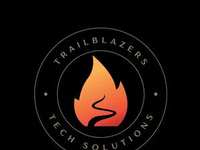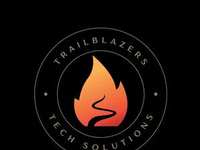How to Prevent Phishing Attacks in Houston: 6 Best Practices
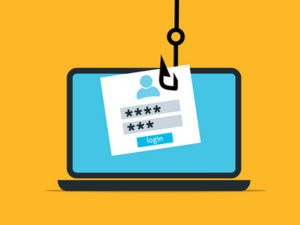
This best practices guide will show you how to prevent phishing attacks in Houston and protect your business from becoming a victim.
Phishing attacks are a constant danger to your business. In 2022 alone, over 500 million phishing attacks occurred - double the rate of the previous year. Now in 2024, the number of attacks continues to increase state-by-state. These harrowing statistics emphasize the importance of understanding and preventing phishing attacks for everyone, especially business owners and employees. Small businesses in Houston and throughout the country are targeted by cyberattackers.
This best practices guide by Braintek will show you exactly what you can do to prevent phishing attacks from hitting your business. As one of the top managed service providers in Houston, we will share actionable strategies designed to fortify your business against these ever-evolving cyber threats.
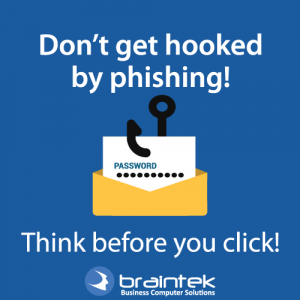 What Is a Phishing Attack?
What Is a Phishing Attack?
Let's start understanding the basics of phishing. Phishing is a kind of cybercrime that involves attacking someone's system or network via messaging. It can be either through SMS, email, or any other medium of communication. Most of the time, phishing attacks come in email format.
For example, traditionally, there used to be emails saying, "Hey, I've got a million dollars in a bank account. I just need to route this to you" or "Your email address is chosen to be a lucky one, and you won a lottery ticket, register your account using this email" or "Hey, I've got this UPS package for you. Just click on this link or download this file” - and so on.
Such email tactics were used to fool unsuspecting people and destroy and/or steal their important data. As soon as the user clicks on the link, it unloads its malicious payload. Simply put, a typical physical attack happens when a party falls for a communication trap.
Prevent Phishing Attacks From Costing Your Business: Schedule Your Risk Assessment
What are the most frequent types of phishing attacks that occur in Houston?
There are three main types of phishing attacks that cybercriminals use.
- Spear Phishing
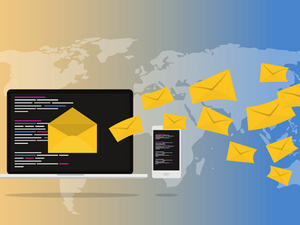
Spear phishing attacks are one of the most targeted approaches of attackers, focusing on specific individuals and organizations. Usually, the attackers gather information from credible sources such as LinkedIn and company websites to tailor messages to the target. For example, the attackers may send 'resumes' for a company with job openings or a personalized email to the CFO of a company, pretending to be a colleague or service provider. - Targeted Phishing
Here, attackers have a general idea of their targets but don't put as much effort into stealing specific information to personalize their message as is the case with spear phishing. For example, the hacker might send emails to a list of executives within a company, each containing a slightly different appeal. - SMS Phishing
In SMS Phishing, the attackers use text messages to trick individuals. These catchy and tricky messages urge them to share crucial information or to click on malicious links. These messages may seem urgent or alarming, pushing recipients to take immediate action. For example, a malicious SMS might be a text claiming a security breach has occurred and providing a link to "secure" their account.
Sometimes, it can be difficult to discern whether an email is valid or a phishing scam. See our article How to Identify Spam and Phishing Emails for details on how you can identify nefarious emails in your inbox.
The Impact of Phishing
A phishing attack significantly affects your business. It might result in a breach of data that can ruin the privacy and security of your network. Phishing also allows criminals to hijack your system via ransomware, infecting your network and enabling them to demand high fees for the return of your data and system functionality. According to a report by Ponemon Institute, the average cost of a data breach caused by phishing is $4.24 million. Here are some other potential impacts of falling victim to phishing attacks:
Malware Distribution
The major impact of phishing attacks is malware distribution. Since the users often end up clicking on malicious links and opening the infected files, it can lead to malware installation on the device. Some malware record password-associated keystrokes, steal or spoil sensitive data, and perform various unauthorized activities on the compromised machine that can lead to a complete disruption and hijacking of your network.
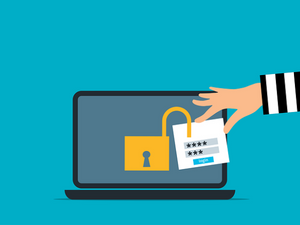 Unauthorized Access
Unauthorized Access
Another big reason you need to prevent phishing attacks is that it can allow attackers to have unauthorized access to your accounts. The situation takes a worse turn when it happens to business networks. By accessing business accounts, attackers can impersonate employees, potentially leading to financial fraud, data theft, or other malicious activities.
Data Breach
Most phishing attempts trick employees into sharing sensitive information, resulting in a data breach. In fact, as per Cybersecurity Ventures, 65% of businesses that experience a data breach due to phishing go out of business within six months. The reality is that phishing attacks often end with the exposure of confidential data, impacting the reputation and operational efficiency of the organization.
Recognizing Phishing Attempts
Now comes the major question: how can you recognize phishing attempts, and what are the best practices to avoid phishing attacks? Let's first learn how phishing attacks occur through email address spoofing.
What is email address spoofing?
Email address spoofing is a technique that involves sending targeted emails. For example, Greg Brainerd is the CEO of Braintek, an MSP in Houston. The attackers will collect his individual information and utilize it to send emails mimicking Greg's official or personal email to his employees. A spoofed email could come from a Gmail address that uses Greg's full name. The phishing attack message might read as follows:
- "Jody, this is Greg. I can't access our work email server tonight so I'm emailing you from my personal address. Could you send me the emails of our client list? I want to check a few things. Thanks."
With a seemingly legitimate email, the hacker might trick the employees into providing sensitive information such as invoices, customer lists, financial statements, and so on. A good policy to adopt is to have employees validate that it is indeed a legitimate request with their senior management and the individual the email is from. Here is a video with more information on how to spot phishing emails.
Phishing Attack Training
The best way to recognize phishing attempts is by studying the styles cybercriminals will use in the messaging. Training your staff on phishing attempts is one of the most critical steps in your prevention plan.
Phishing attack training helps you build a comprehensive understanding of phishing attacks by simulating and then analyzing phishing emails in real-time. This helps staff understand the process involved in phishing, as well as the risks involved in falling victim to phishing attacks in Houston.
6 Definitive Ways Small Businesses in Houston Can Prevent Phishing Attacks
Now, let's get into the best practices to prevent phishing attacks. We suggest the following steps to mitigate phishing attacks:
- Two-factor authentication (2FA)
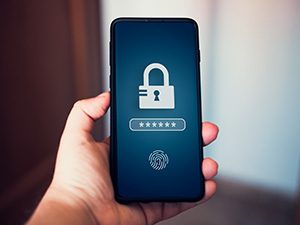
All scale businesses should enable 2FA to fortify account security by requiring an additional authentication layer. This is particularly valuable in the event of compromised passwords. - Practice Conditional Access
Conditional access refers to restricting logins from unfamiliar sources. It bolsters protection for user accounts by avoiding suspicious and risky logins from outside sources. - Anti-Phishing Attack Tools
Many cybersecurity professionals highly recommend business owners employ AI-based anti-spam tools to prevent phishing attacks. Such tools automatically identify and isolate potential threats in advance. - Phishing Attack Awareness is Key
As a business owner, you should implement regular phishing attack training sessions to empower employees with the essential skills needed to prevent phishing attacks and other cyber threats. This investment is long-term in scope. By training staff on how to avoid falling victim to phishing attempts, you ensure that everyone has a hand in protecting your network. You’ll also want to foster a work culture where the employees validate suspicious emails with colleagues or IT before taking any actions. - Conduct Mock Phishing Attacks
Just as mock tests prepare the candidate for the best possible results, conducting mock phishing attacks enhance employee awareness and readiness. Simulated phishing attacks have been proven to ensure ongoing vigilance and preparedness among employees. - Continuous IT monitoring and Consultation
Utilize programs and policies towards the proactive detection of potential threats, implement continuous monitoring of email traffic. There are multiple solutions that function to swiftly identify unusual patterns and then review and update security measures based on evolving phishing tactics and the current threat landscape. Braintek CEO Greg Brainerd also emphasizes transparent communication between IT and other departments to enable quick responses to security concerns and inquiries.
How to Implement an Incident Response Plan
No matter how well you are prepared, there's always a chance a Houston phishing attack succeeds at penetrating your local business. Therefore, you must be prepared to mitigate the situation. In the case of phishing attacks, you need to implement an incident response plan that consists of the following steps:
-
Immediate Reporting
In the case of unauthorized payments, promptly contact the bank to initiate the reversal of charges and notify the affected vendor about the incident. Transparent communication with the bank, vendors, or other impacted parties will rectify the situation, minimize financial losses, and maintain trust. Business owners are advised to implement reputation management strategies to mitigate potential damage.
-
Detection and Removal of Outlook Rules
Attackers often create Outlook rules to divert emails. Fortify your sensitive information to detect and remove any Outlook (or relevant email platform) rules.
-
Change the Passwords Immediately
As soon you realize a phishing attack has occurred, change your passwords as soon as possible. This will assist your business in isolating the compromised account and thwarting ongoing unauthorized access. The immediate password change will also enhance the security measures and prevent future breaches.
-
Assess and Improve
Lastly, it is always important to learn from the attack and educate your employees about the entire process, its consequences, and countermeasures. Remember that having ongoing education, awareness, and technological safeguards in place are critical components of a robust and reliable cybersecurity strategy. Continuously adopting the best countermeasures for phishing attacks will help you to avoid the associated losses.
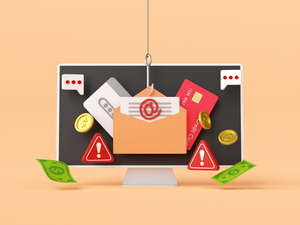 How to Prevent Phishing Attacks on Home Computers
How to Prevent Phishing Attacks on Home Computers
Since the pandemic, the demand for remote work has been constantly growing. With many employees working remotely, it is vital to prevent home computers from phishing attacks, especially the ones that are used for business purposes. Attackers can often find a way to steal business credentials through the home computers as they share the same network.
Using a home computer often requires connecting to a VPN, a virtual private network for your business. This means that consistent security practices are crucial for maintaining a robust defense against phishing, especially in home or remote locations. You can implement the following security measures to fortify your network and prevent phishing attacks in any location:
- Apply the same security measures as on corporate devices as per your organization's standards and framework in order to prevent unauthorized access.
- Utilize stringent email security measures on personal devices, especially when accessing company emails. Use robust malware protection and employ Multi-Factor Authentication (MFA) to fortify account access.
- Keep your computers entirely off the corporate network when not in use. Further, utilize strong and hard-to-guess passwords for the critical accounts associated with the corporate network directly or indirectly. Implement two-factor authentication for the additional layer of security.
- There are various techniques and tools to prevent phishing attacks. We recommend using Managed Detection and Response (MDR) or Extended Detection and Response (XDR) tools to monitor and counter the potential threats on home computers.
- Implement security policies and a proactive approach that ensures rapid detection and containment of security incidents.
- Just like an organization network, you can also periodically conduct simulated phishing tests on home computers to assess the level of awareness and preparedness of remote employees.
- Conduct comprehensive security assessments on home computers, comparing the effectiveness of different anti-spam solutions. Contact Braintek to conduct a thorough analysis of your IT infrastructure and protection against phishing attacks.
Ensure Your Houston-Based Company is Equipped to Prevent Phishing Attacks
Phishing attacks pose a constant threat. Follow this best practices guide phishing attack training, conducting regular tests with your employees, and using continuous IT monitoring. These actions form a robust defense against such cyberattacks, which can save you from massive unforeseen costs. An incident response plan, including immediate reporting, will also help you contain and mitigate potential issues.
Additionally, remember to safeguard the home computers of all of your staff. This is an often overlooked preventative measure to ward off phishing attacks for Houston-area businesses.
For a reliable security assessment to prevent phishing attacks in your organization, contact Braintek. We offer services to assess, strengthen, and optimize your cybersecurity posture in Houston and nearby cities. Our expert team works with your business to understand its core functions in order to elevate your network’s effectiveness.
Don't wait until a phishing attack occurs – take proactive steps to secure your digital assets today.
Schedule your assessment with one of our senior advisors by calling us at (281) 810-9192 or visiting https://www.braintek.com/discoverycall/.










